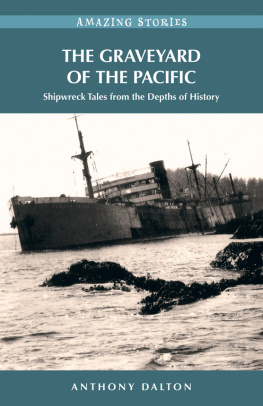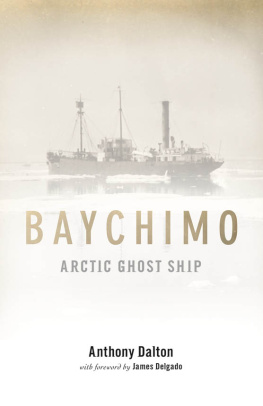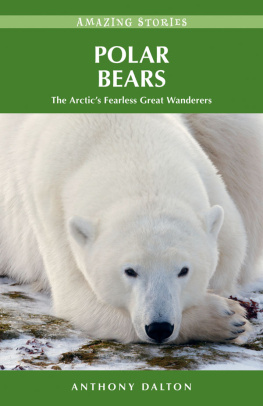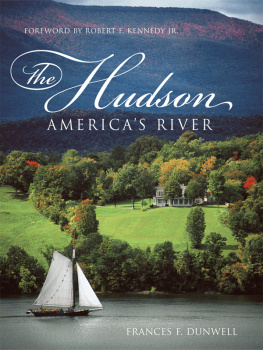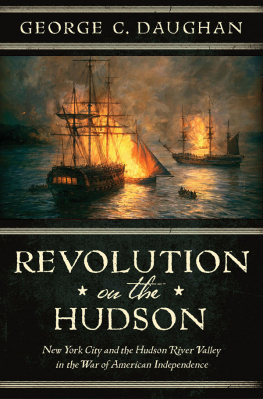Copyright Anthony Dalton, 2010.
All rights reserved. No part of this publication may be reproduced, stored in a retrieval system, or transmitted in any form or by any means, electronic, mechanic, photocopying or otherwise (except for brief passages for purposes of review) without the prior permission of Dundurn Press. Permission to photocopy should be requested from Access Copyright.
Published by Natural Heritage
Books A Member of The Dundurn Group
Edited by Shannon Whibbs
Design by Jennifer Scott
Printed and bound in Canada by Transcontinental.
Library and Archives Canada Cataloguing in Publication
Dalton, Anthony, 1940
River rough, river smooth : adventures on Manitobas historic Hayes River / by Anthony Dalton.
Includes bibliographical references and index.
ISBN 978-1-55488-712-5
1. Dalton, Anthony, 1940- --Travel--Manitoba--Hayes River. 2. Hayes River (Man.)--Description and travel.
3. Hayes River (Man.)--History. I. Title.
FC3395.H38D35 2009 917.127104 C2009-906936-9
1 2 3 4 5 14 13 12 11 10
We acknowledge the support of the Canada Council for the Arts and the Ontario Arts Council for our publishing program. We also acknowledge the financial support of the Government of Canada through the BookPublishing Industry Development Program and The Association for the Export of Canadian Books, and the Government of Ontario through the Ontario Book Publishers Tax Credit program, and the OntarioMedia Development Corporation.
Care has been taken to trace the ownership of copyright material used in this book. The author and the publisher welcome any information enabling them to rectify any references or credits in subsequent editions.
J. Kirk Howard, President
www.dundurn.com
Colour photos Anthony Dalton Collection
Front cover photographs courtesy of the author.
Dundurn Press
3 Church Street, Suite 500
Toronto, Ontario, Canada
M5E 1M2 | Gazelle Book Services Limited
White Cross Mills
High Town, Lancaster, England
LA1 4XS | Dundurn Press
2250 Military Road
Tonawanda, NY
U.S.A. 14150 |
For Steve Crowhurst and Graeme Halley
All my life, he said, I have searched for the treasure. I have sought it in the high places, and in the narrow. I have sought it in deep jungles, and at the ends of rivers, and in dark caverns and yet have not found it.
Instead, at the end of every trail, I have found you awaiting me. And now you have become familiar to me, though I cannot say I know you well.
Who are you?
And the stranger answered:
Thyself.
From an old tale
S INCE I WAS A BOY, roaming alone across a deserted Second-World-War aerodrome in southern England on foot or on my bicycle in search of wild creatures, or building a makeshift raft out of oil drums and old rope and paddling across a flooded gravel quarry, I have felt at home in the outdoors. In those long-gone years, when not at school, my days varied between solitary adventures and reading about the travels of larger-than-life figures from history and from fiction. Books by H. Rider Haggard, G.A. Henty, and R. M. Ballantyne adorned my bookshelves. Later, as I grew older and my literary education improved, I found much satisfaction in the heroic deeds as told by the masters of Greek mythology. Homer in particular thrilled me with his dramatic opus The Iliad and his glorious tale of the epic journey undertaken by Ulysses in The Odyssey. Equally, I was inspired by the magnificent prose poems crafted by Samuel Taylor Coleridge, John Keats, Henry Wordsworth Longfellow, Sir Walter Scott, and Alfred Lord Tennyson, plus the controversial but brilliant Charles Beaudelaire.
Those feelings of youthful comfort in the outdoors, combined with the books I devoured, eventually translated into a nomadic adult life of adventure that has taken me across great deserts, into the high mountains, through steamy jungles, down mighty rivers, and over the worlds seas. By the early 1990s I had travelled just about everywhere I wanted to go, and I had a memory bank full of extremely personal treasures. For these reasons I included the three enigmatic paragraphs from an old tale by an unknown author to open this book. Those few words, more than perhaps any others, could reflect the possible raison dtre for my many long journeys, including the two related in this collection.
From my earliest years the sea held a fascination for me that I could never deny. Perhaps that had much to do with being born in Gravesend, on the south bank of the Thames estuary in its lower reaches, one of the most important commercial rivers in the world. Every day a never-ending parade of ships of all sizes and from all maritime nations steamed up and down the river, to and from Tilbury Docks and the Pool of London. As a small boy, whenever I could, I watched from the shore and dreamed of faraway places.
In direct contrast to the sea, following an extended visit to Egypt, Sudan, and Libya, followed by the equally sand-covered lands of Syria, Jordan, and Iraq in my early twenties, I developed a passion for deserts. As a direct result of that initial North African and Middle Eastern experience, I later spent much time exploring the western and central Sahara, the incredibly beautiful Namib, much more of the Middle East, and the barren parts of the Australian Outback. Most years, my love of boats and being on the water fitted comfortably in between desert journeys.
Despite my devotion to the deserts and seas of the world, often when back home in Canada I would study maps of the North. In the late 1970s and mid 1980s I travelled in the Arctic a few times and knew I wanted to see more. Equally, I was fascinated by the barren lands between the populated southern corridor across Canada and the Arctic Circle. The great rivers, in particular, called out to me, perhaps inspired by my early years on the banks of the Thames. Tales of the adventures lived by the hardy fur traders and explorers of the Hudsons Bay Company intrigued me. I knew that one day, when I had had my fill of deserts, I would roam north and see more of Canada.
In 1992 I visited Churchill, Manitoba, on a photojournalism assignment. There, on the shores of Hudson Bay, I met Mark Ingebrigtson. Mark, owner of a local travel agency, loaned me his truck so I could go exploring on my own. He arranged for me to take a helicopter flight over the Hudson Bay shoreline in search of polar bears. He and a fellow photographer, Mike Macri, showed me Churchill and its environs in a way that few could. Across the Churchill River, easily visible from where I watched beluga whales cruising in from the bay, stood the concrete bulk of Fort Prince of Wales: once a bastion of the Hudsons Bay Company.
Eighteen months later Marks friend and business associate, Rob Bruce-Barron, a marketing advisor to a variety of Manitoba organizations, contacted me with an offer I could not resist. A team of Cree First Nation rowers from Norway House were planning to take a replica of a traditional York boat down the full length of the Hayes River to York Factory in the summer of 1994. Would I like to go with them to document the expedition? Would I?You bet I would.


